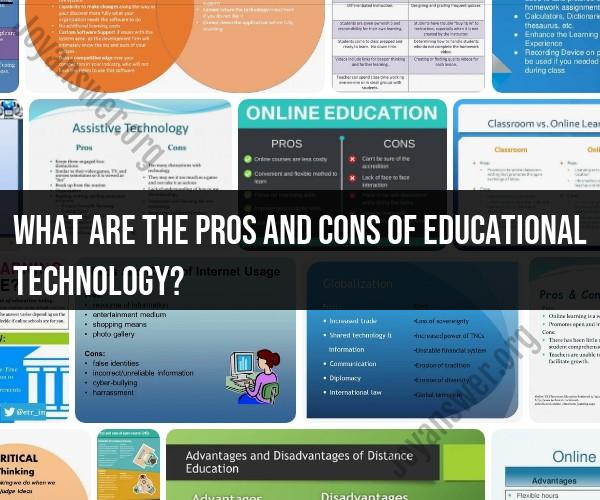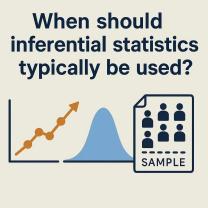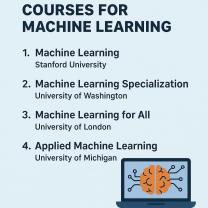What are the pros and cons of educational technology?
Educational technology, or edtech, has become increasingly prevalent in modern education, offering various tools and resources to enhance the learning experience. However, like any other tool, it comes with its own set of advantages and disadvantages. Here are some pros and cons of educational technology:
Pros:
Access to Information: Edtech provides students and teachers with access to a vast amount of information, making it easier to research and learn about a wide range of topics.
Engagement and Interactivity: Interactive multimedia elements, simulations, and educational games can make learning more engaging and enjoyable for students, helping to maintain their interest.
Personalized Learning: Educational technology allows for personalized learning experiences, where students can progress at their own pace, focus on their strengths and weaknesses, and receive targeted feedback.
Collaboration and Communication: Edtech tools facilitate communication and collaboration among students, teachers, and even globally, breaking down geographical barriers and promoting teamwork.
Efficiency and Time-Saving: Technology can automate administrative tasks, grading, and other routine activities, freeing up time for teachers to focus on more impactful aspects of education.
Accessibility: Edtech can make education more accessible to students with diverse learning needs, providing tailored resources and tools for those with different abilities and learning styles.
Preparation for the Digital World: Integrating technology into education helps prepare students for the digital world they will encounter in their future careers.
Cons:
Cost: Implementing and maintaining educational technology can be expensive, and not all schools or students may have equal access to these resources.
Technical Issues: Technical glitches, internet connectivity problems, and other technical issues can disrupt the learning process and create frustration for both students and teachers.
Dependence on Technology: Overreliance on technology may lead to a lack of development in essential skills, such as critical thinking, problem-solving, and effective communication.
Security and Privacy Concerns: The collection and storage of student data can raise privacy concerns. Schools and educational institutions must take measures to ensure the security of sensitive information.
Inequality: Not all students may have equal access to technology, creating a digital divide between those with and without the necessary tools and resources.
Distraction: The use of technology in the classroom can sometimes be a source of distraction, with students potentially using devices for non-educational purposes.
Teacher Training: Teachers may require training to effectively integrate technology into their teaching methods, and not all educators may be equally comfortable with or prepared for this shift.
It's important to note that the effectiveness of educational technology depends on how it is implemented and integrated into the educational environment. When used thoughtfully and purposefully, edtech can contribute significantly to the learning experience.
Analyzing the advantages and disadvantages of educational technology.
Advantages of Educational Technology
Enhanced Engagement and Motivation: Educational technology can make learning more engaging and interactive, which can help to motivate students and increase their interest in the subject matter. This can be achieved through the use of multimedia content, interactive simulations, and gamification.
Personalized Learning: Educational technology can be used to provide personalized learning experiences that cater to the individual needs and learning styles of each student. This can be done by using adaptive learning software, which adjusts the difficulty of the material based on the student's performance, and providing students with access to a variety of learning resources.
Increased Collaboration and Communication: Educational technology can facilitate collaboration and communication among students, teachers, and parents. This can be done through the use of online discussion forums, chat rooms, and video conferencing tools.
Access to Global Resources: Educational technology can provide students with access to a vast array of educational resources from around the world. This can help to broaden their horizons and expose them to different cultures and perspectives.
Improved Efficiency and Productivity: Educational technology can help to improve the efficiency and productivity of both teachers and students. This can be done by automating tasks, such as grading and providing feedback, and by giving students access to self-paced learning materials.
Disadvantages of Educational Technology
Digital Divide: The digital divide, the gap between those who have access to technology and those who do not, can disadvantage students who do not have access to computers, the internet, or other technology tools.
Distraction and Overload: Technology can be a distraction for students, and too much screen time can lead to problems with attention and focus. Additionally, the abundance of information available online can be overwhelming for students and make it difficult to discern reliable sources from unreliable ones.
Over-reliance on Technology: Over-reliance on technology can lead to a loss of essential skills, such as critical thinking, problem-solving, and creativity. Additionally, students who are too reliant on technology may have difficulty learning in traditional classroom settings.
Cost: Educational technology can be expensive to implement and maintain, and schools may not have the resources to invest in the latest technology tools.
Privacy and Security Concerns: There are concerns about the privacy and security of student data when technology is used in education. Schools need to have policies in place to protect student data and to ensure that technology is used safely and responsibly.
Conclusion
Educational technology has the potential to revolutionize the way we teach and learn, but it is important to be aware of both the advantages and disadvantages of using technology in education. When used appropriately, technology can be a powerful tool for enhancing learning, but it is important to remember that technology is not a replacement for good teaching and learning.












